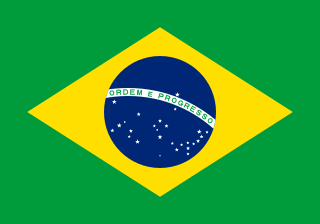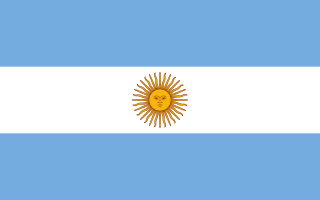White is a racial classification and skin color specifier, generally used for people of European origin; although the definition can vary depending on context, nationality, and point of view. This term has at times been expanded to encompass persons of South Asian, West Asian, and North African descent, persons who are often considered "non-white" in other contexts in the United States. It has also been alleged that, in the United States, people of Southern European and even Irish descent have been excluded from this category, although this idea has been contested. The usage of "white people" or a "white race" for a large group of mainly or exclusively European populations, defined by their light skin, among other physical characteristics, and contrasting with "black", "red", "brown", "yellow", and other "colored" people or "persons of color", originated in the 17th century. Prior to this, Europeans also described people from East Asia as being "white". It was only during the 19th century that this vague category was transformed in a pseudo-scientific system of race and skin color relations.

European Americans are Americans of European ancestry. This term includes people who are descended from the first European settlers in America as well as people who are descended from more recent European arrivals. European Americans are the largest panethnic group in the United States, both historically and at present.

Ukrainian Canadians are Canadian citizens of Ukrainian descent or Ukrainian-born people who immigrated to Canada. In 2016, there were an estimated 1,359,655 persons of full or partial Ukrainian origin residing in Canada, making them Canada's eleventh largest ethnic group and giving Canada the world's third-largest Ukrainian population behind Ukraine itself and Russia. Self-identified Ukrainians are the plurality in several rural areas of Western Canada. According to the 2011 census, of the 1,251,170 who identified as Ukrainian, only 144,260 could speak the Ukrainian language.
The Demographics of Montreal concern population growth and structure for Montreal, Quebec, Canada. The information is analyzed by Statistics Canada and compiled every five years, with the most recent census having taken place in 2016.

"Cultural mosaic" is the mix of ethnic groups, languages, and cultures that coexist within society. The idea of a cultural mosaic is intended to suggest a form of multiculturalism, different from other systems such as the melting pot, which is often used to describe nations like the United States' assimilation.

Italian Canadians comprise Canadians who have full or partial Italian heritage and Italians who migrated from Italy or reside in Canada. According to the 2016 Census of Canada, 1,587,970 Canadians claimed full or partial Italian ancestry. The census enumerates the entire Canadian population, which consists of Canadian citizens, landed immigrants and non-permanent residents and their families living with them in Canada. Residing mainly in central urban industrial metropolitan areas, Italian Canadians are the seventh largest self-identified ethnic group in Canada behind French, English, Irish, Scottish, German and Chinese Canadians.
The demographics of Toronto, Ontario, Canada make Toronto one of the most multicultural and multiracial cities in the world. In 2016, 51.5% of the residents of the city proper belonged to a visible minority group, compared with 49.1% in 2011, and 13.6% in 1981. Toronto also has established ethnic neighbourhoods such as the multiple Chinatowns, Corso Italia, Little Italy, Little India, Greektown, Koreatown, Little Jamaica, Little Portugal and Roncesvalles, which celebrate the city's multiculturalism.

Immigration to Canada is the process by which people migrate to Canada for the purpose of residing there—and where a majority go on to become Canadian citizens. As of 2019, Canada has the eighth largest immigrant populations in the world, while foreign-born people make up about one-fifth of Canada’s population—one of the highest ratios for industrialized Western countries.
The demographics of Metro Vancouver indicate a multicultural and multiracial region. Metro Vancouver is a metropolitan area, with its major urban centre being Vancouver, British Columbia, Canada. The Vancouver census metropolitan area, as defined by Statistics Canada, encompasses roughly the same territory as the Metro Vancouver Regional District, a regional district in British Columbia. The regional district includes 23 local authorities. Figures provided here are for the Vancouver census metropolitan area and not for the City of Vancouver.

The history of immigration to Canada details the movement of people to modern-day Canada, which also belongs to a wider debate continuing among anthropologists over various possible models of Settlement of the American to the New World, as well as their pre-contact populations.

Asian Canadians are Canadians who can trace their ancestry back to the continent of Asia or Asian people. Canadians with Asian ancestry comprise the largest and fastest growing group in Canada, after European Canadians, with roughly 17.7% of the Canadian population. Most Asian Canadians are concentrated in the urban areas of Southern Ontario, Southwestern British Columbia, Central Alberta, and other large Canadian cities.

Brazilians are the citizens of Brazil. A Brazilian can also be a person born abroad to a Brazilian parent or legal guardian as well as a persons who acquired Brazilian citizenship. Brazil is a multiethnic society, which means that it is home to people of many ethnic origins. As a result, a majority of Brazilians do not identify their nationality as not being necessarily directly related to their ethnicity; in fact, the idea of ethnicity as it is understood in the anglophone world is not popular in the country.
Immigration to Europe has a long history, but increased substantially in the later 20th century. Western Europe countries, especially, saw high growth in immigration after World War II and many European nations today have sizeable immigrant populations, both of European and non-European origin. In contemporary globalization, migrations to Europe have accelerated in speed and scale. Over the last decades, there has been an increase in negative attitudes towards immigration, and many studies have emphasized marked differences in the strength of anti-immigrant attitudes among European countries.
European emigration can be defined as subsequent emigration waves from the European continent to other continents. The origins of the various European diasporas can be traced to the people who left the European nation states or stateless ethnic communities on the European continent.

Indian Canadians are Canadians with ancestry from India. The term Indo-Canadian or East Indian, is sometimes used to avoid confusion with the Indigenous Peoples of Canada. Statistics Canada specifically uses the term Asian Indian to refer to Indian Canadians. Categorically, Indian Canadians comprise a subgroup of South Asian Canadians which is a further subgroup of Asian Canadians. According to Statistics Canada, Indian Canadians are one of the fastest growing communities in Canada, making up the second largest non-European group after Chinese Canadians.

The population of Brazil is very diverse, comprising many races and ethnic groups. In general, Brazilians trace their origins from three sources: Europeans, Amerindians and Africans. Historically, Brazil has experienced large degrees of ethnic and racial admixture, assimilation of cultures and syncretism.

Canadians are people identified with the country of Canada. This connection may be residential, legal, historical or cultural. For most Canadians, many of these connections exist and are collectively the source of their being Canadian.
European Canadians, also known as Euro-Canadians, are Canadians with ancestry from Europe. They form the largest panethnic group within Canada with roughly 73 percent of the population.

Argentines are people identified with the country of Argentina. This connection may be residential, legal, historical or cultural. For most Argentines, several of these connections exist and are collectively the source of their being Argentine.
Eastern European Canadians are Canadians of Eastern European ancestry. Eastern European Canadian people can usually trace back full or partial heritage to Russia, Ukraine, Belarus, Moldova and other nations in, bordering with, or otherwise culturally connected to Eastern Europe.









